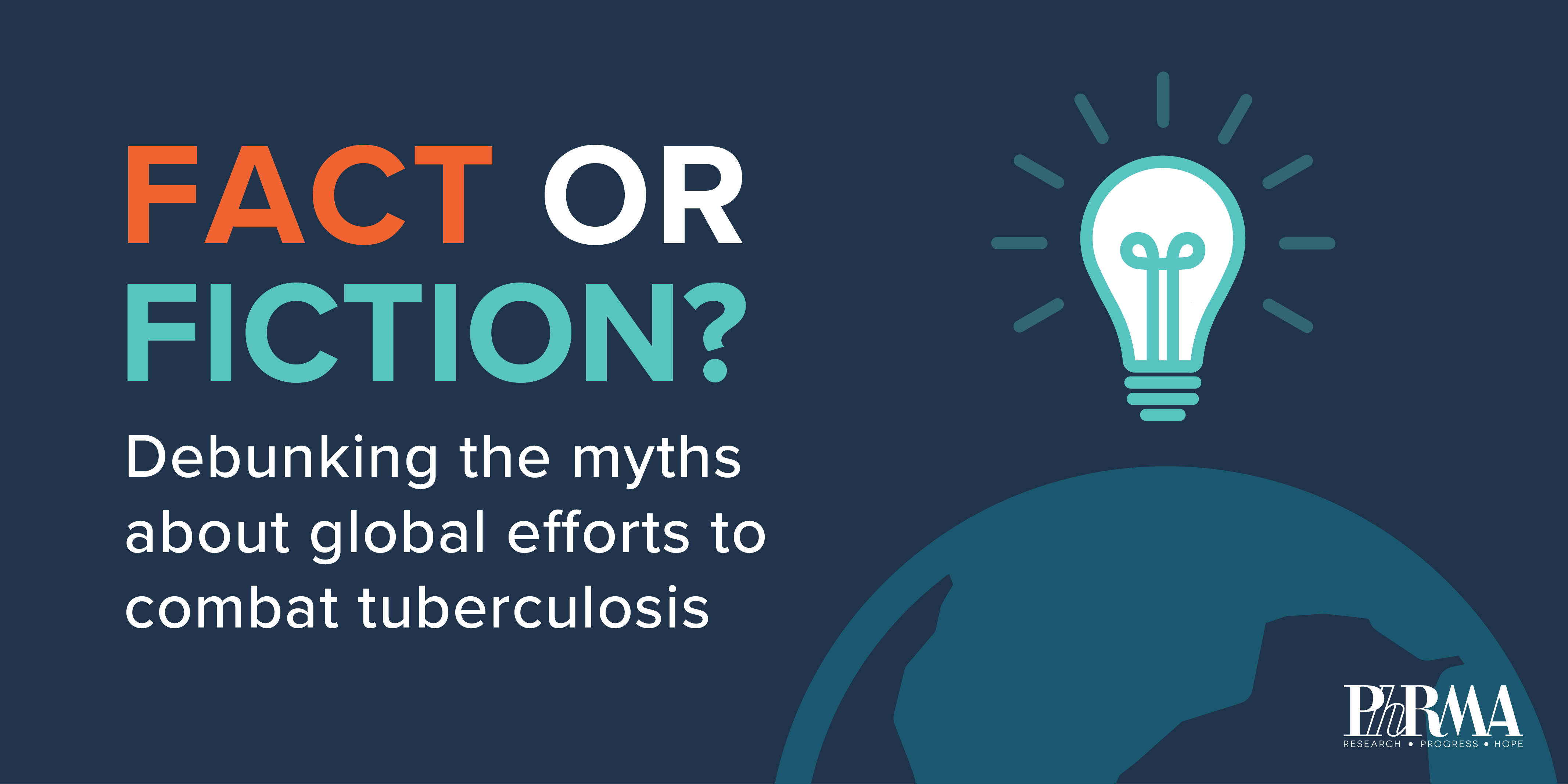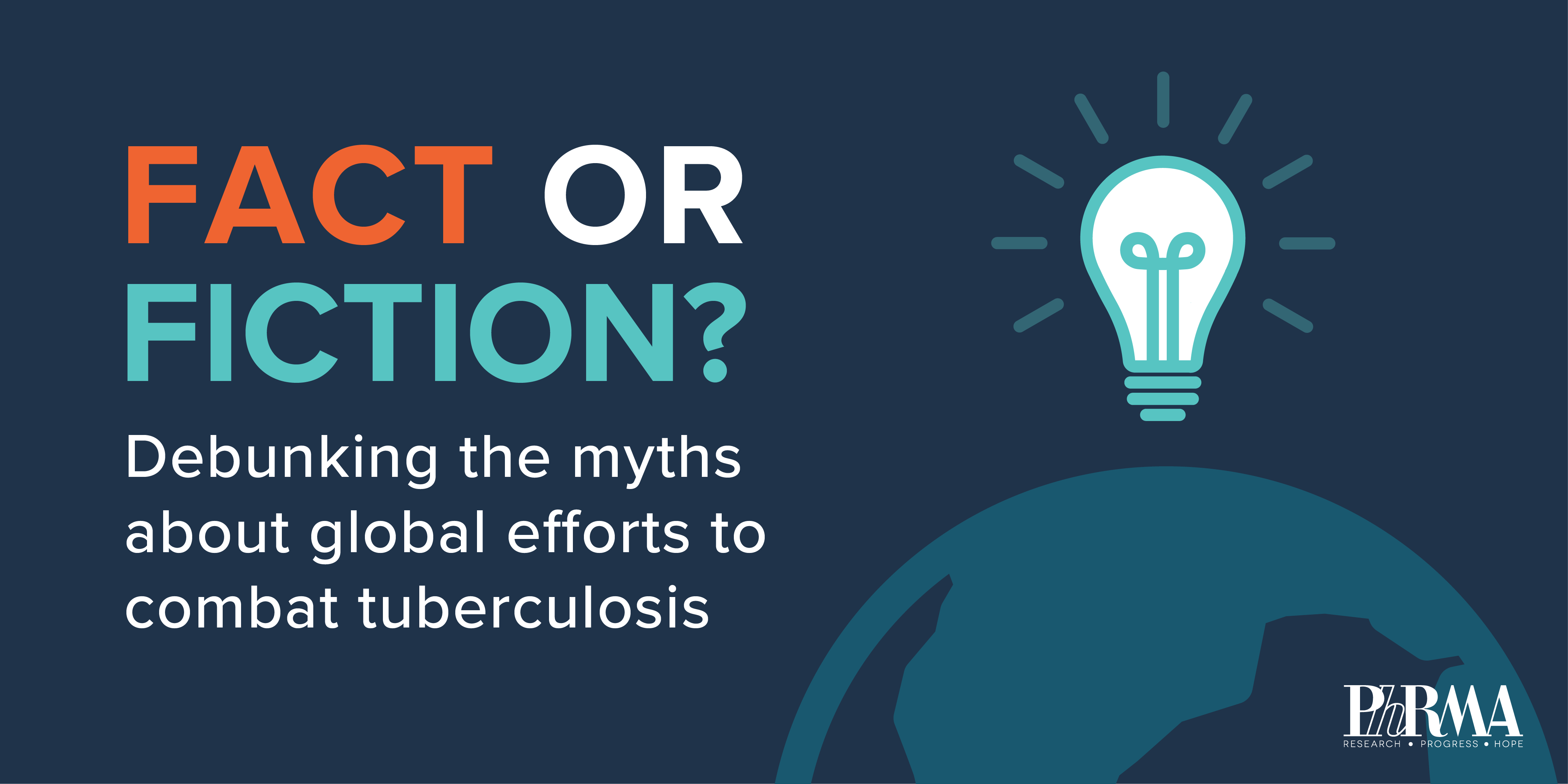On September 26, world leaders will convene in New York for the first-ever United Nations (UN) High-Level Meeting on Ending Tuberculosis (TB). This event could not be more critical – or more timely – because even though TB kills more than one million people per year, it has not received enough attention from global policymakers.

As the world prepares to make desperately needed new commitments to end TB, the discussion on how best to tackle this challenge has at times become mired in unnecessary controversy. Instead of working to find practical solutions, some groups have used this meeting to advance old myths that have little to do with today’s reality or the unique challenges of treating TB.
Myth: TB is no longer a major global health challenge.
Fact: TB continues to be a significant health challenge, and is one of the top ten causes of death and the leading cause of infectious disease-related deaths worldwide. Multiple-drug resistant TB (MDR-TB) presents a particular threat and has been deemed a “public health crisis” by the World Health Organization. Fortunately, there has been significant progress in fighting the disease to build upon: an estimated 53 million lives were saved through TB diagnosis and treatment between 2000 and 2016.
Myth: Patients aren’t getting the treatment they need because TB medicines are too expensive.
Fact: Most first-line medicines used to treat TB are generics available at low prices. A full six-month course of treatment for a patient with TB costs less than $20. New patented medicines developed for MDR-TB are widely available with deep discounts and robust access programs made possible through donations, partnerships, differential pricing and voluntary licensing agreements. In developing countries, particularly those most impacted by TB, non-profit organizations like Global Drug Facility and Global Fund make TB drugs available at little to no cost through public-sector procurement funds. Unfortunately, despite these comprehensive and expansive efforts, many countries are not taking full advantage of these funds and at least one-third of high-burden countries have left global donor funding for TB on the table.
Myth: The biggest obstacle to fighting TB worldwide is the cost of medicines.
Fact: The treatment of TB is remarkably complex. It requires advanced diagnostics, trained health care professionals, well-run clinics and effective systems to monitor months-long treatments. Compared to these expenses, the list price of the medicines is not a significant barrier to patient access. Most TB-afflicted countries lack strong and appropriately funded health care systems, which are big obstacles. To meaningfully address TB, there must be a focus on the real barriers to TB care, such as the limited availability of diagnostics, a lack of centralized models of care and inefficient regulatory approval systems, all of which stand in the way of effectively diagnosing and treating patients with TB. Further, innovative TB treatments may in fact help save costs. For example, research has shown that development of a TB medicine that cuts the duration of treatment from 6 months to 4 months would significantly reduce costs and allow patients to more quickly return to productive activities.
Myth: Weakening IP protections will help fight TB.
Fact: Undermining IP protections will not meaningfully improve access to TB medicines, but it will harm an already fragile innovation environment. While critics often point to IP as a barrier to access to medicines, there is little evidence that this is the case. In fact, one study analyzed 21 factors that could potentially limit access to medicines in low- and middle-income countries and found no correlation between IP protections and a lack of access to treatments and cures. For TB in particular—where, according to the WHO, investment into new drugs is at its lowest level since 2008—incentivizing research and development is especially important. Effective IP protections can encourage inventors to make the risky investments necessary to discover new TB medicines and bring them to patients.
Myth: The United States government supports IP protections so corporations can reap profits.
Fact: The U.S., as the home to some of the world’s most innovative companies, has long recognized the value of IP in incentivizing research and development. Successive Democratic and Republican administrations have championed the global system of IP protection to foster innovation and save lives around the world. In recent years, the Obama administration opposed anti-IP language in other UN declarations and committed itself “to advancing access to existing and new medicines, including by supporting innovation through robust intellectual property protections.” The current U.S. administration has continued to oppose language at the UN that would discourage urgently-needed private sector R&D into new medical treatments. Research shows that IP is not a significant barrier to access and helps promote improvements in access to medicines, including those used to treat TB.
Download the fact sheet on global TB innovation here.




